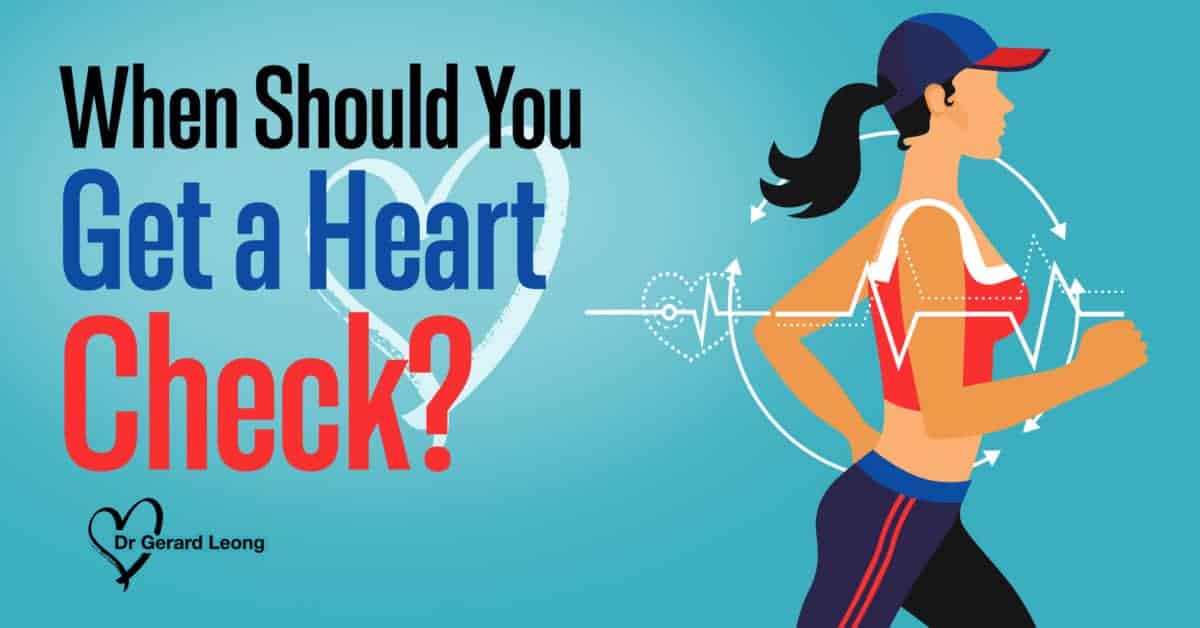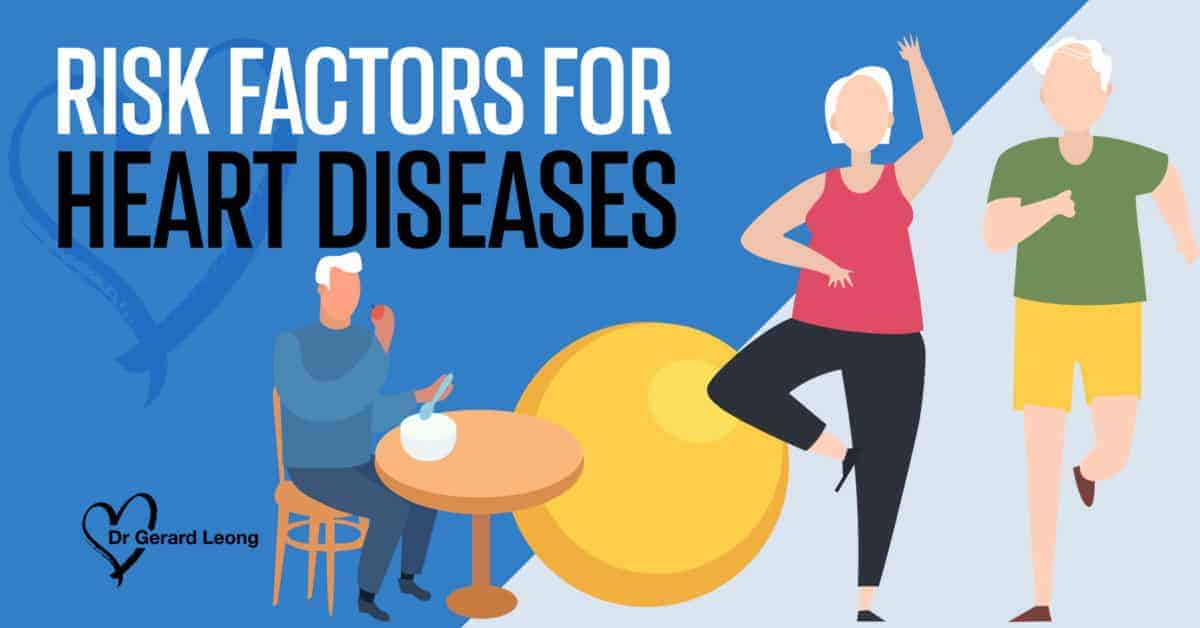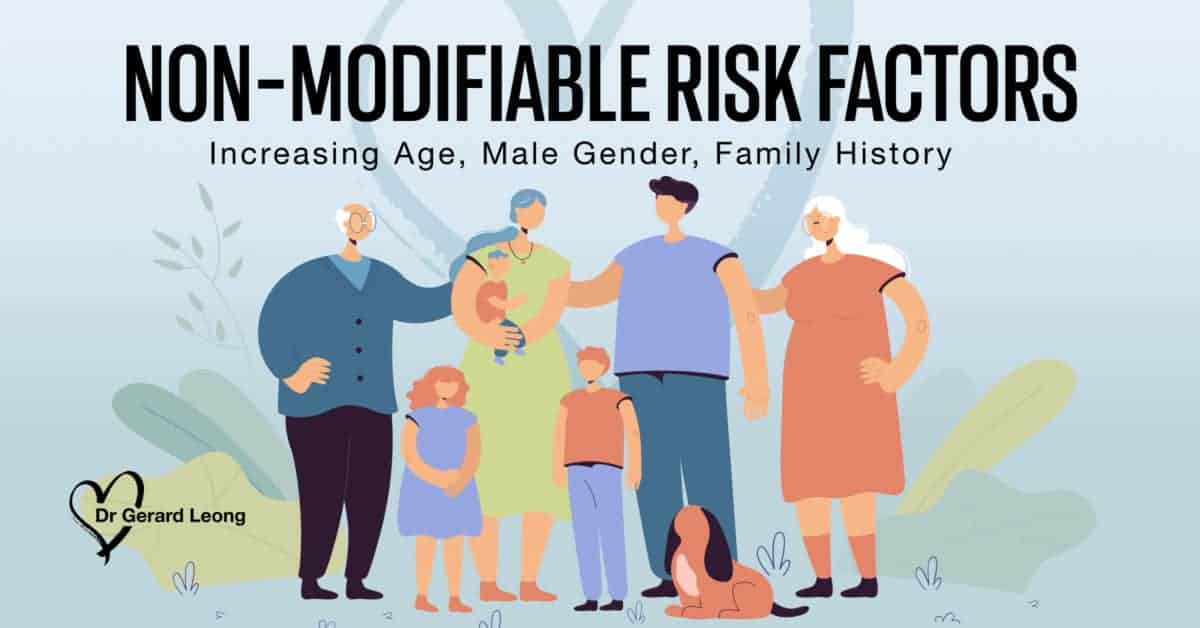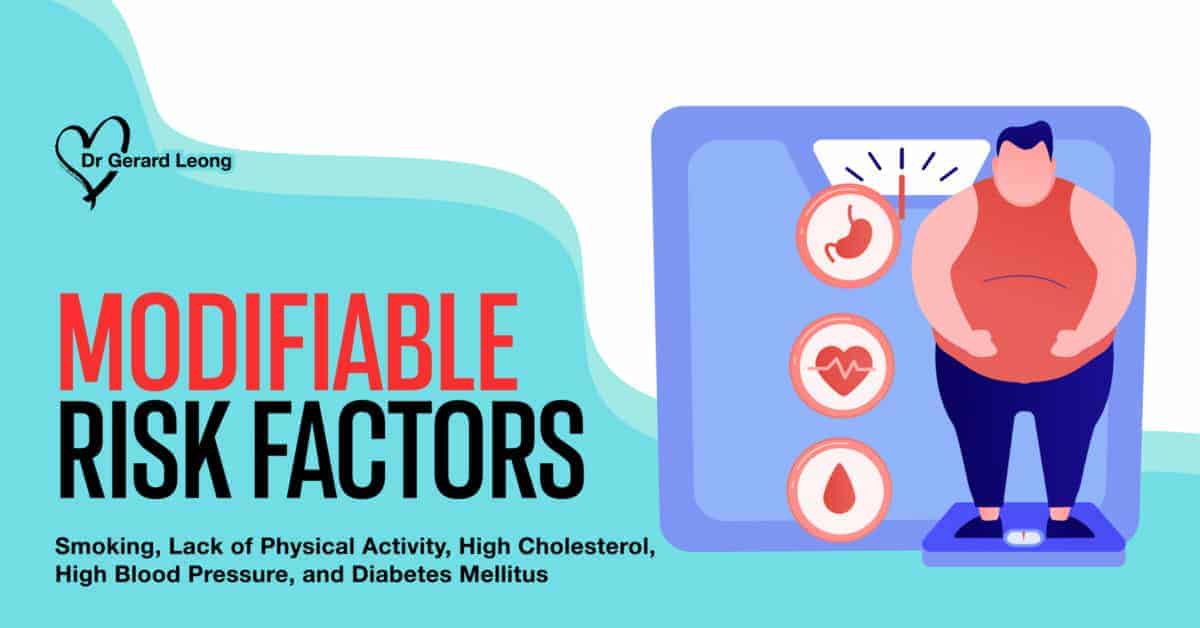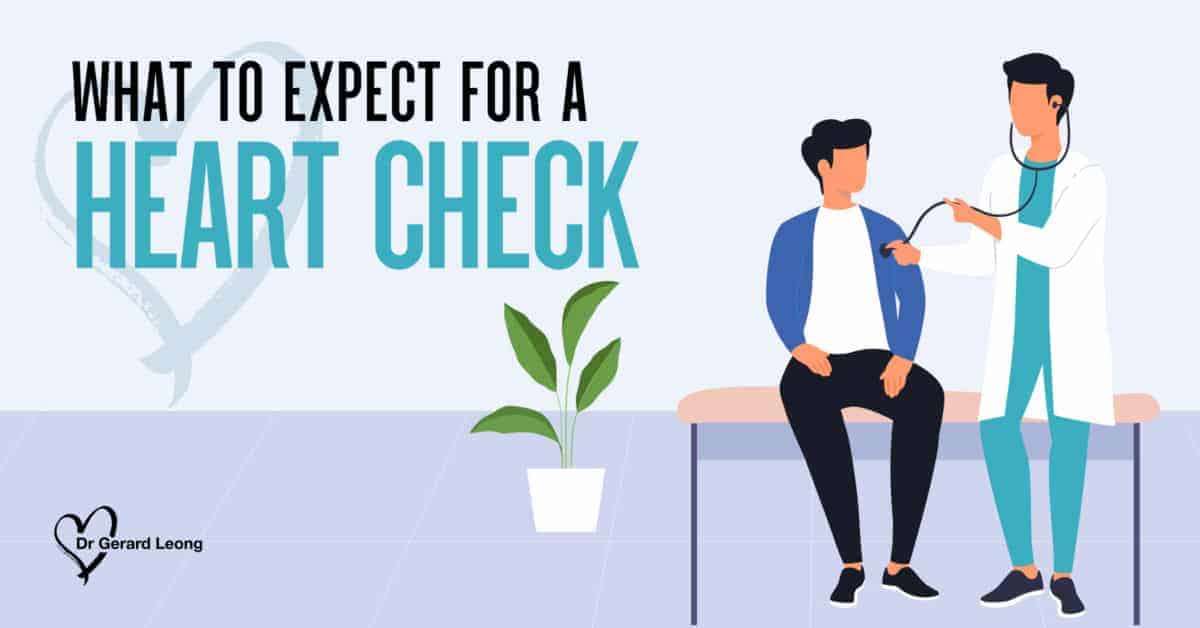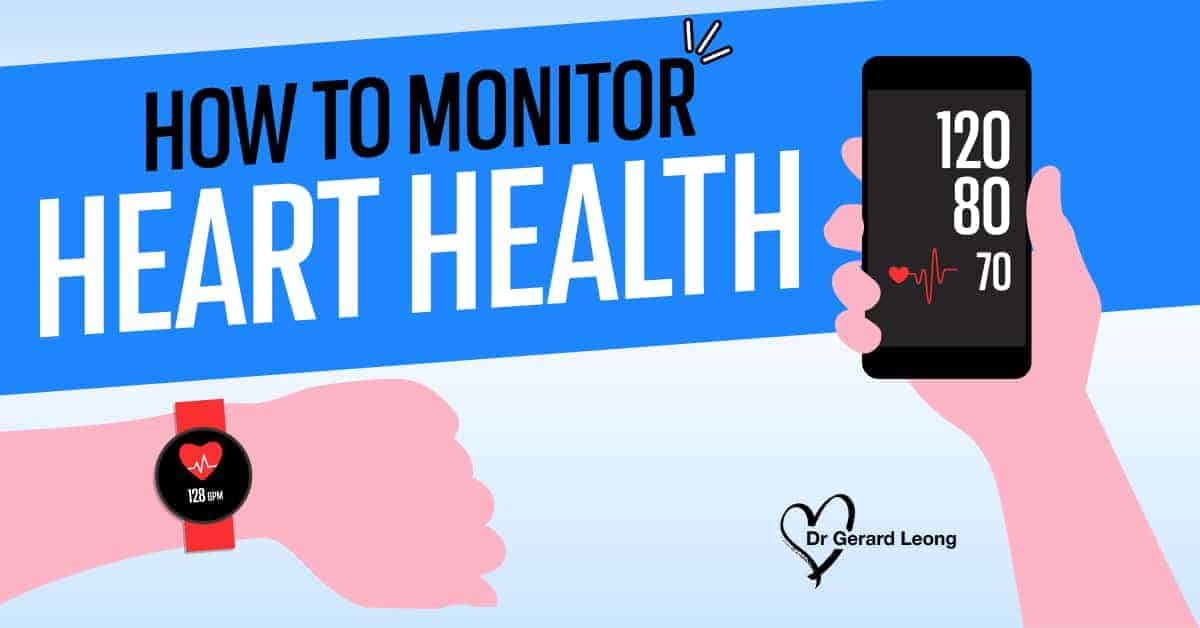What Are The Risk Factors For Heart Diseases?
Thanks to years of research and clinical experience, we are now able to identify situations or conditions which increases a person’s risk of coronary heart disease. Knowing these factors is the first step in the prevention of heart disease.
These factors can be grouped broadly into two main categories:
- Non modifiable risk factors – these are cardiac risk factors that cannot be changed.
- Modifiable risk factors – these are risk factors that can be modified, treated, and controlled through lifestyle changes and appropriate medications.
The American Heart Association recommends patients focus on heart disease prevention in early life. This is why it’s essential you assess your risk factors and start working on keeping them low. The sooner you identify and manage your risk factors, the better the chances of living a heart-healthy life.
Let’s take a closer look at these risk factors.
Non-Modifiable Disease Factors
These risk factors can’t be changed. The more of these factors you have, the greater the chance of you developing coronary heart disease. And since you can’t do anything about these risk factors, it’s essential you undergo regular heart screening tests.
So what are these risk factors? Let’s find out!
Increasing Age
Majority of people who experience a heart attack are 35 years or older. It rises from 1-2 per 1000 persons in 35-44 YO age group, to 4-10 per 1000 persons in the 65-74 YO and to 9-18 per 1000 persons 75-84 YO age groups.
While heart attack can impact both sexes in old age, it has been observed that women are at a greater risk of dying. This is why it’s essential you regularly check for modifiable risk factors for heart disease, e.g. elevated blood pressure and cholesterol levels, especially if you’re over 65 YO.
But the young were not spared…
A study of young adults (45 YO or less) in Singapore published in 2012 revealed that young adults represented 8%-12% of all heart attacks during the 5-year study period.
Young patients were more likely to be male, have a history of smoking and hyperlipidemia.
Smoking was the single most important modifiable risk factor in causing premature heart attack.
Male Gender
Men and women are at risk for heart attacks. However, it has been observed that men get heart attacks earlier in life.
This is why it’s important you undergo heart health checks after you reach 20 YO.
Female Gender
Heart disease risk rises in women after menopause. Menopause is not a disease, and it not a cause of heart disease. However, at menopause, the cardio-protective effects of natural estrogen- protecting the artery wall inner lining (endothelium), keeping the artery wall flexible- are withdrawn, thus leaving the cardiovascular system vulnerable to the other gender-independent risk factors of heart disease.
However, if a lady has diabetes mellitus, or is a smoker, it has been observed that the cardio-protective effects of natural estrogen are not sufficient to prevent coronary artery disease.
Despite the benefits of natural estrogen, postmenopausal hormone therapy to reduce the risk of coronary heart disease or stroke is not recommended because the studies on postmenopausal hormone therapy have not shown unequivocally that it reduces cardiovascular risk.
Heredity (Family History)
Most people with a family history of heart disease have one or more other risk factors. Just as you can’t control your age, sex, and race, you can’t control your family history. So, if your family has a history of heart conditions, you should go for heart health checks.
Prior cancer treatment with chemotherapy
In cancer-survivors who have had prior therapy with cardio-toxic chemotherapeutic drugs, there, there is an elevated risk of heart diseases like cardiomyopathy. If you are experiencing cardiac symptoms, like breathlessness, or chest pains, do not ignore them. Seek medical assessment for it.
Modifiable Risk Factors
Smoking
Smoking is a very major modifiable risk factor for heart disease, especially heart disease in young individuals, regardless of gender.
It is never too late to stop smoking.
After smoking cessation for…
1 year, your risk of coronary heart disease is reduced to about half that of a smoker.
5-15 years, your risk of coronary heart disease is reduced to that of a non-smoker.
15 years, your risk of coronary heart disease is that of a non-smoker.
Even after a heart attack, smoking cessation can reduce the chance of another heart attack by 50%.
Lack Of Physical Activity
The less you move, the more your mind, body and heart suffers.
It is essential you are physically active at least 150 minutes per week.
It will make your brain, muscles and heart more efficient. This reduces the risk of dementia, diabetes mellitus, improves your cholesterol profile and reduces your blood pressure.
Poor Cholesterol Profile
The cholesterol profile will determine your risk of heart disease.
A poor cholesterol profile will put you at a higher risk of developing heart disease.
If you add other risk factors such as high blood pressure and smoking, the risk increases many-folds. To ensure your arteries remain clog-free, you need to know about your cholesterol profile and on steps to improve.
Come to Gerard Leong Cardiology Clinic to know about your cholesterol profile and on steps to improve.
High Blood Pressure
High blood pressure are not just numbers of no consequence. High blood pressure increases the risk of heart disease, stroke, and kidney failure.
For the heart, it increases your heart’s workload, causing the heart muscles to function abnormally, and the arteries to become dilated and stiffer. This can lead to strokes, heart attacks, heart failure, dilated aorta, atrial fibrillation, and erectile dysfunction.
Early detection and treatment can prevent the above complications.
Come to Gerard Leong Cardiology Clinic to know more about high blood pressure and steps to improve your blood pressure numbers.
Diabetes mellitus
Majority of diabetes mellitus is modifiable. However, there is a distinct group, the type 1 diabetes mellitus group that is not modifiable.
Diabetes mellitus is a major risk factor for heart disease or poor outcomes in established heart disease.
Physical inactivity and poor diet choices are major causes of type 2 diabetes mellitus.
Walking more and eating right is the foundation of good type 2 diabetes mellitus prevention and management. If diabetes mellitus control is still not adequate, appropriate choice of the right medication are next steps.
Come to Gerard Leong Cardiology Clinic to know more about diabetes mellitus and steps to improve your blood sugar numbers.
Heart Screening v Heart Check, what is the difference?
Heart screening is suitable for an individual with no symptoms and with no known medical risk factors of heart disease, as outlined above.
It is good to know one’s risk for various cardiac risk factors as outlined above, so as to detect it early, and act on it early, before complications surprise you downstream.
Heart check is more suitable if an individual has symptoms of heart disease, eg chest discomfort, breathlessness on exertion or at rest, palpitations, or has multiple risk factors for heart disease as outlined above.
Targeted evaluation can thus be done and a specific solution crafted for the medical issue in question.
What Types Of Heart Checks Can I Get?
Now that you’re familiar with the risk factors for developing heart disease, let’s go over what types of heart checks you may need.
Heart checks involve obtaining a relevant medical history and details of symptoms if any. This questioning may seem intrusive, but are important in directing to appropriate tests so as to reach an accurate diagnosis.
There are several tests that are used for assessing risk for heart disease or heart status itself.
Cholesterol levels – to assess your cholesterol profile. Fasting is not generally required unless in certain specific clinical situations.
Blood glucose levels – increased glucose levels may indicate you have diabetes. Fasting is not generally required unless in certain specific clinical situations.
Blood pressure levels – high blood pressure may indicate that your cardiovascular system is under stress.
Electrocardiogram (ECG or EKG)
This test measures the heart’s electrical activity to get a better understanding of the heart rate and rhythm.
Depending on the results of the initial test screenings, the doctor may recommend additional testing, including:
Echocardiogram
An echocardiogram is a non-invasive test that uses ultrasound to assess for condition of heart muscle, valves and blood flow. The sound waves make moving pictures of your heart so your cardiologist can get a good look at its size, shape, and function.
This test is very useful in checking for causes for symptoms such as chest discomfort, breathlessness, palpitations, dizziness, or for assessing stroke risks.
In Gerard Leong Cardiology Clinic, we also use 3D, and strain rate methods to assess for cardiac systolic (contraction) and diastolic (relaxation) function parameters that have established implications in cardiac care management and outcomes.
Exercise cardiac stress ECG test
It is also known as cardiac stress test. It involves a patient walking on a treadmill while the doctor monitors you for symptoms, measures your blood pressure, heart rate, and heart ECG rhythm. This test is used to directly assess your heart electrical status, or to indirectly determine if there is adequate blood flow through the coronary arteries to your heart with an accuracy of 70-80%.
Exercise cardiac stress echocardiogram test
It is similar to the above exercise cardiac stress ECG test. However, there is added echocardiogram imaging at rest and peak stress to directly visualise cardiac function status.
It is used to indirectly determine if there is adequate blood flow through the coronary arteries to your heart with an accuracy of 80-90%.
Most but not all are suitable for these stress tests.
Do come to Gerard Leong Cardiology Clinic to speak to our staff and cardiologist for a more detailed discussion on which test is most appropriate for you.
Cardiac CT for Calcium Scoring
This is a non-invasive imaging test that uses a powerful X-ray machine to look for presence, location and severity of calcification of the arteries that supply blood to your heart.
The presence and extent of CAC can predict the presence of coronary artery stenosis, but in general it is a better marker of the extent of coronary atherosclerosis than the severity of stenosis. It can also be used to assess the origins of coronary arteries.
However, it cannot detect non-calcified soft plaques, or degree of coronary artery blockage (stenosis), major causes of heart attacks and symptoms.
As it is non-invasive, patient does not need recovery time. There is no need for IV contrast injection, and involves less radiation compared to the CT Coronary angiography test.
This test can be used as one of the methods for screening for CAD in patients deemed to be at risk of CAD.
CT Coronary Angiography (CTCA):
Coronary CT Angiogram is another type of CT heart scan, where a powerful X-ray machine is used to look for presence, location and severity of calcification of the arteries that supply blood to your heart.
In CTCA, a special dye (contrast) is injected into veins, where it will then flow into the heart and coronary arteries.
The coronary arteries can be assessed for abnormal origins or course, and the presence, location and severity of any blockages (stenosis) in the coronary arteries.
It can detect non-calcified soft plaques which can contribute to heart attacks if not detected and untreated.
As it is non-invasive, they don’t require recovery time. However, it does involve injection of contrast into the veins, and higher dose of radiation compared to CT calcium scoring.
Most but not all are suitable for this test.
Do come to Gerard Leong Cardiology Clinic to speak to our staff and cardiologist for a more detailed discussion.
It might be used to evaluate the cause of symptoms like chest pains, or shortness of breath sensation, or part of a comprehensive sudden cardiac death preventive evaluation.
Cardiac catheterization
This is an invasive test. The cardiologist puts a hollow tube called a catheter into the coronary arteries of your heart via the wrist (radial) artery or the groin (femoral) artery. Then X-rays are taken after injecting a contrast dye via the catheter into an artery. This test can find blockages, and other problems.
If needed, more advanced imaging techniques like intra-vascular ultrasound (IVUS) or optical coherence tomography (OCT) or hemodynamic technique like fractional flow reserve (FFR) can be used to evaluate the blockage.
Cardiac catheterization (with its complimentary modalities) is considered the “Gold standard” for checking for coronary artery disease.
If significant blockage is noted on cardiac catheterization, intensive optimal medical therapy is very necessary for good outcomes.
However not all blockages require revascularization procedures like Percutaneous coronary intervention (PCI) or coronary artery bypass surgery (CABG).
These therapeutic options are outlined below.
Most but not all patients are suitable for cardiac catheterization. As there are distinct, uncommon, but severe risks involved in cardiac catheterization, it is not a procedure to be taken lightly.
Do come to Gerard Leong Cardiology Clinic to speak to our staff and cardiologist for a more detailed discussion on whether you need this test.
What To Expect Before, During, And After A Heart Check?
If you’ve never been to a heart check before and want to know if there’s anything special you should or shouldn’t do before a heart check-up – the answer is nothing.
If it’s a regular heart check-up you don’t have to prepare for it.
In case you’ll be doing some specific blood tests, in general, fasting is not needed. In uncommon but distinct specific situations, it may be needed.
Speak to our staff at Gerard Leong Cardiology Clinic for detailed instructions.
During a heart check, your doctor will obtain the relevant medical history and details of symptoms if any.
This questioning may seem intrusive, but are important in directing to appropriate tests so as to reach an accurate diagnosis.
Specifically, the doctor may ask about the following:
- Symptoms if any
- Your medical history
- Physical activity, hours of sleep, stress level, smoking and alcohol use history
- Your family’s medical history
Then the following will be done
- Measurement of blood pressure and heart rate
- Measurement of weight, and height to obtain your body mass index (BMI)
Laboratory Tests may be done:
Rest Electrocardiography (ECG or EKG) may be done
After these tests are done, based on the results your doctor will give you a recommendation on what to do to keep your heart healthy or tell you to proceed with further tests. The recommended additional tests can be:
- Exercise cardiac stress test (cardiac stress test or exercise electrocardiogram)
- Echocardiography (stress echocardiography)
- Cardiac CT for Calcium Scoring (coronary artery calcium scoring)
- Coronary CT angiography (CTA)
- Coronary catheter angiography
How Much Does a Heart Check Cost In Singapore?
The price of heart health screenings in Singapore can cost anywhere from $48 up to $500. The cost of the health screening depends on if you want an overall test or just a test for a certain disease.
An overall heart check-up costs much more than a test for one heart disease. The cost also varies from clinic to clinic and it doesn’t have much to do if it’s a private or public one.
Regular health screening tests are usually not covered by insurance. However, some health insurance plans do offer discounts and rewards when you go on regular screenings and check-ups.
Tips On How You Can Monitor Heart Health At Home
Thanks to technological innovation, cardiac patients can now monitor their heart health efficiently at home. If you want to monitor your heart health at home, there’re several devices you can use:
Blood Pressure Monitors
Tracking your blood pressure at home is an important part of monitoring your heart health. It is very useful in the diagnosis and management of hypertension.
Heart Rate Monitors
Heart rate monitors are handy devices that you can wear around your wrist. It is useful for gauging heart stress when an individual is exercising.
Some models can even detect irregular heart rates, which may be a warning sign of atrial fibrillation, a major cause of ischemic stroke.
Health Fitness Apps
There are now various apps that can monitor BP, heart rate and count number of steps per day.
This is useful for home heart status monitoring.
How Can Lifestyle Changes Reduce The Risk Of Heart Disease?
A healthy lifestyle is the best defence against stroke and heart disease. But what exactly is a healthy lifestyle?
Here are some of the steps you can take towards a healthy lifestyle.
Quit bad habits
Smoking, drugs, and alcohol greatly affect your overall well-being. By STOPPING bad habits, you’ll take a big step forward into a healthy lifestyle.
If you plan on quitting any of these bad habits, speak to your doctor for a plan that will help you quit.
Safe Physical Activity
Gentle to moderate physical activity is a fantastic way to reduce the risk of heart disease and improve your overall health.
Cardiovascular exercises like walking, running, jumping, or something simple like doing household chores strengthens your heart and can help you manage your blood pressure, blood sugar and blood cholesterol.
You will need a heart-healthy program that you can follow to allow for best chance of maximum compliance.
A safe physical activity plan is an integral part of a heart-healthy lifestyle program.
Come to Gerard Leong Cardiology Clinic for a consultation and for a practical customized heart-healthy lifestyle program to improve your heart health.
Start Healthy Diet Habits
Eating healthily and moderately can help you manage your blood pressure, blood sugar and blood cholesterol.
By managing these risk factors, you can reduce the risk of stroke, heart attack, and other cardiovascular diseases.
A healthy diet plan is an integral part of a heart-healthy lifestyle program.
Come to Gerard Leong Cardiology Clinic for a consultation and for a practical customized heart-healthy lifestyle program to improve your heart health.
Conclusion
The best way to heal a cardiovascular disease is to prevent it. Early detection is the best way to ensure your heart remains healthy.
Come on by and visit our clinic for your heart health check.
Even if you have established heart disease, come for a second opinion.
Gerard Leong Cardiology clinic specializes in cardiovascular disease management, using evidence-based, patient-specific treatment plans, for all spectrums of cardiac disease, from prevention to treatment.

